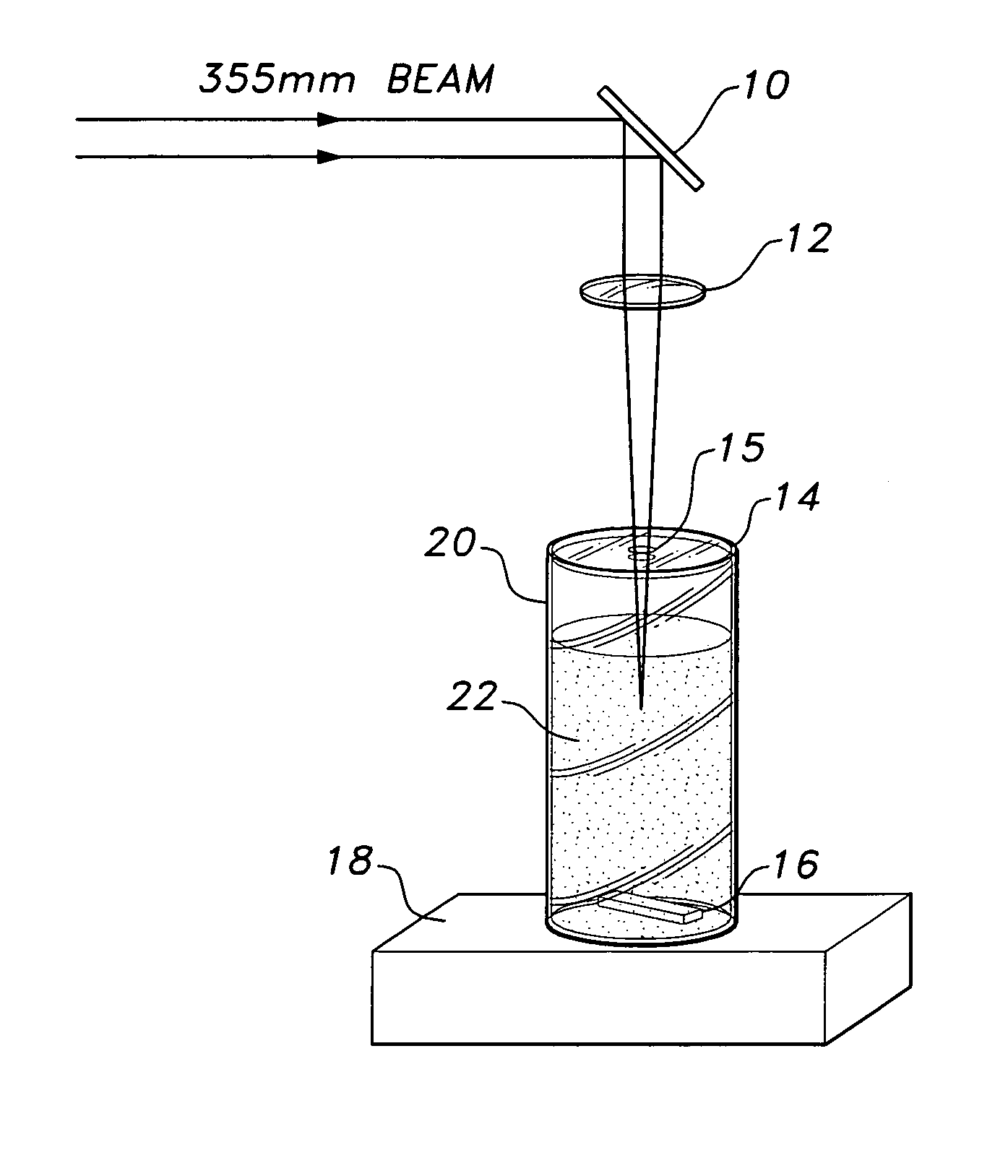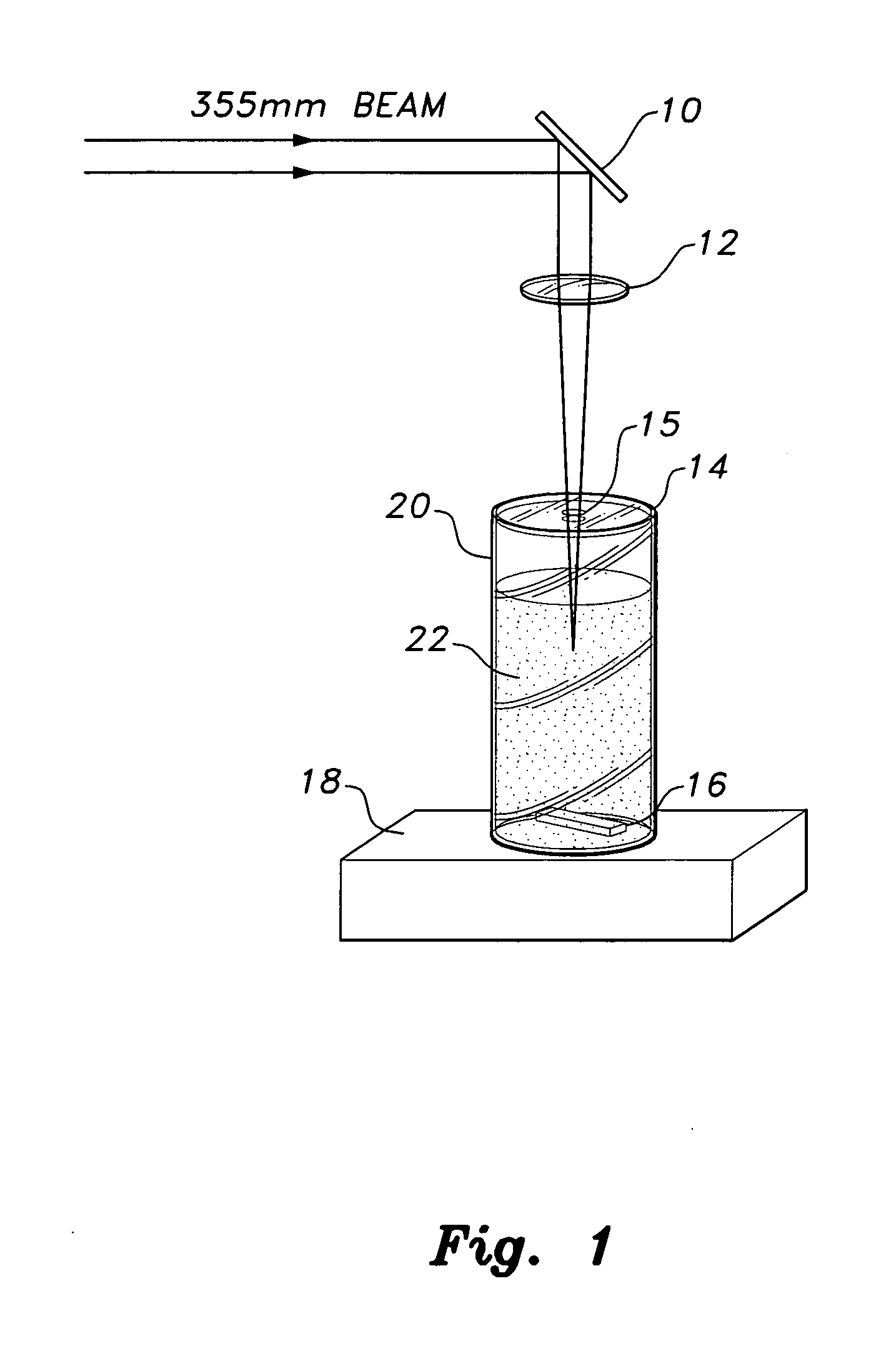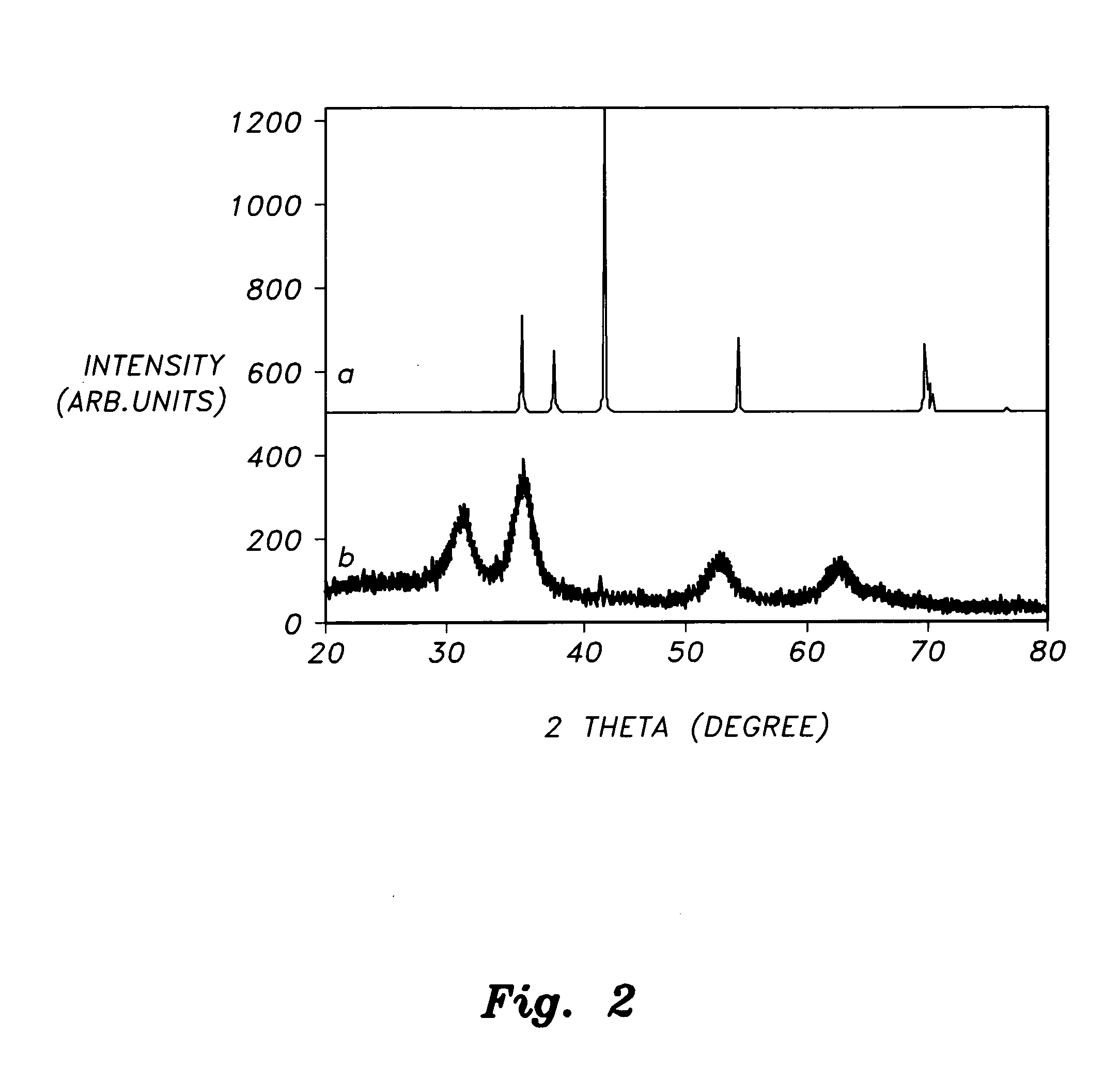Method of forming zinc peroxide nanoparticles
a technology of zinc peroxide and nanoparticles, which is applied in the field of water quality testing methods, can solve the problems of rapid death, extremely toxic cyanide, and relatively small amounts of this species lethal to humans
- Summary
- Abstract
- Description
- Claims
- Application Information
AI Technical Summary
Benefits of technology
Problems solved by technology
Method used
Image
Examples
example
[0024]For the synthesis of nanosize ZnO particles, a laser-based setup was designed and constructed, as shown in FIG. 1. For ablation of zinc particles in pure de-ionized water, a Q-switched Nd-YAG laser operating at 355 nm wavelength using a third harmonic generator was employed. This laser can deliver pulse energy of 1-300 mJ with a pulse width of 8 ns and operates at a 10 Hz pulse repetition rate. The collimated beam is tightly focused on the target sample of zinc metal using a mirror 10 and convex lens 12 to create a spark or breakdown in the sample. The laser energy was measured with a calibrated energy meter (Ophir model 300) for the study of dependence of nanoparticle yield on incident laser energy. In order to get a uniform laser beam shape, a 2 mm diameter aperture 15 was formed in the glass cell cover 14, which was placed in the path of the laser beam.
[0025]For the synthesis of nanoparticles, a high-purity metallic zinc foil, 1 mm thick and having a purity of 99.99% (Sigma...
PUM
| Property | Measurement | Unit |
|---|---|---|
| Fraction | aaaaa | aaaaa |
| Fraction | aaaaa | aaaaa |
| Time | aaaaa | aaaaa |
Abstract
Description
Claims
Application Information
 Login to View More
Login to View More - R&D
- Intellectual Property
- Life Sciences
- Materials
- Tech Scout
- Unparalleled Data Quality
- Higher Quality Content
- 60% Fewer Hallucinations
Browse by: Latest US Patents, China's latest patents, Technical Efficacy Thesaurus, Application Domain, Technology Topic, Popular Technical Reports.
© 2025 PatSnap. All rights reserved.Legal|Privacy policy|Modern Slavery Act Transparency Statement|Sitemap|About US| Contact US: help@patsnap.com



